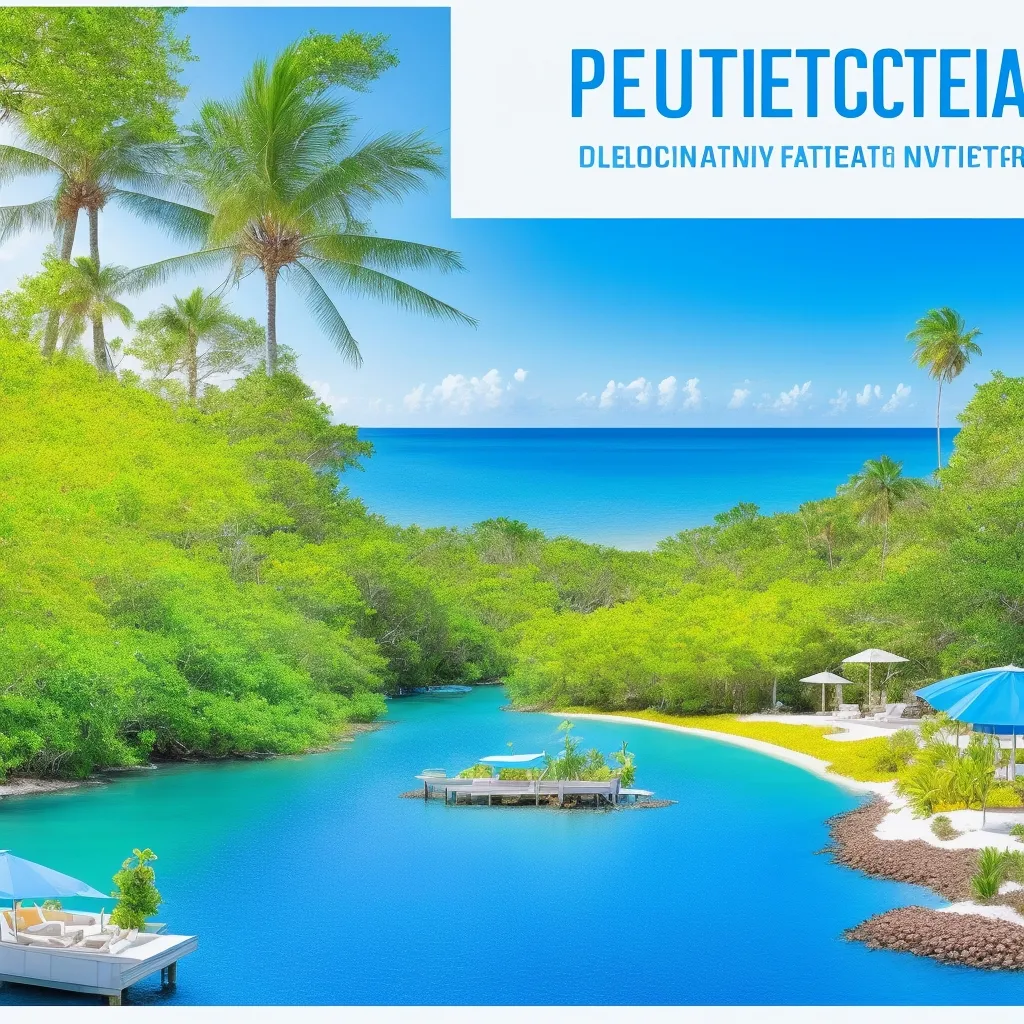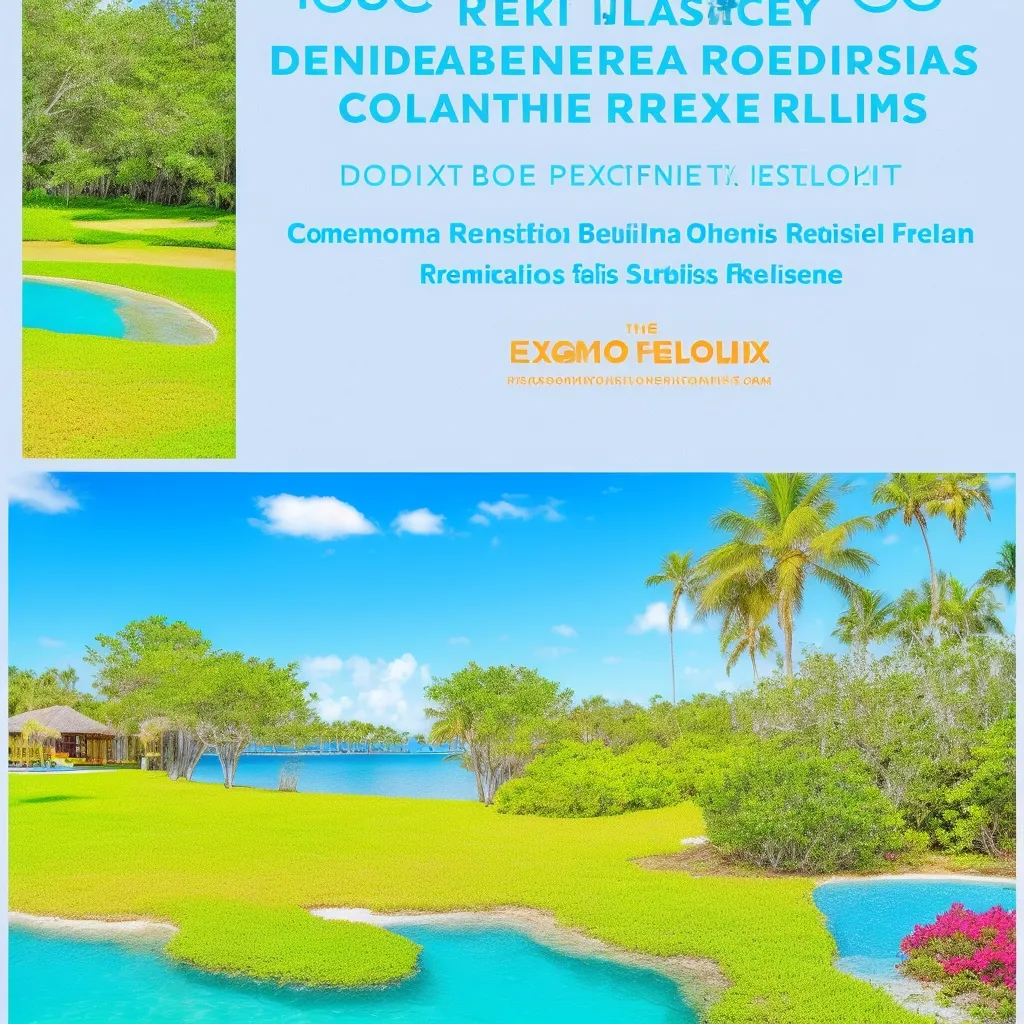The Subtle Art of a Successful Detox: Integrating Complementary Therapies Like an Expert
As an experienced practitioner and teacher of complementary therapies for over a decade, I’ve often found that many guides on integrating complementary therapies into detox retreats lack depth or precision. The fact is, to truly excel, it’s not enough to just add practices; you must understand how they intertwine to create a powerful, transformative synergy. This guide is designed to fill those gaps by offering a complete and nuanced overview of this exciting topic.
Here’s what most people don’t realize: the successful integration of complementary therapies can triple the effectiveness of a traditional detox retreat. This holistic approach doesn’t just improve the experience; it literally revolutionizes the results obtained. Whether you’re a healthcare professional looking to enrich your services or an individual curious to explore these practices, this guide will provide you with clear answers and immediately applicable strategies.
Understanding the Crucial Role of Complementary Therapies in Detox Retreats
Detox retreats in France have grown in popularity, offering programs that combine healthy eating, controlled fasting, and wellness activities. According to the Observatoire du Thermalisme, the therapeutic wellness sector grew by 15% in 2023, with particularly strong demand for integrative approaches. What’s interesting is that despite this rise in power, the added value of complementary therapies in these retreats is often underestimated. Frustrating, isn’t it?
Yet, therapies like aromatherapy, acupuncture, or yoga play a crucial role in improving the results of detox retreats. They offer supportive methods that align perfectly with the goals of purifying and regenerating the body and mind. The World Health Organization officially recognizes the effectiveness of many complementary therapies, including acupuncture and certain meditation practices, in supporting natural healing processes.
The Essential Foundations of Complementary Therapies
What have I learned from teaching over 500 professionals? The successful integration of complementary therapies rests on a clear understanding of their specific roles and how they can support the detoxification process. A common mistake is to see them as a simple aesthetic addition rather than an essential component of the wellness program.
Here is the insider secret that experts jealously guard: the synergy between different therapies can create a multiplying effect on the results. Here are the three pillars that every expert must master:
-
Physical support: Releasing toxic locks Techniques like massage or reflexology can help release toxins accumulated in body tissues. Did you know that reflexology, for example, by stimulating the reflex zones of elimination organs, promotes blood and lymphatic circulation, which is essential for effective drainage? Studies conducted by the Institut National de la Santé et de la Recherche Médicale (INSERM) have shown that lymphatic massage can increase lymphatic flow by 20 to 30%, significantly accelerating the elimination of metabolic waste. It’s a gentle approach, but its effects on the lymphatic system are surprisingly powerful.
Try this and see the difference: Integrate a lymphatic drainage session from the first day of your retreat to prepare your system for optimal detoxification.
Key takeaway: The body needs help getting rid of toxins; these therapies are true physical catalysts.
-
Mental balance: Calming the inner turmoil Yoga and meditation offer powerful ways to reduce stress, often a factor in toxin retention. Research published in the Journal of Alternative and Complementary Medicine shows that meditation and deep breathing can significantly decrease the production of cortisol, the stress hormone, which contributes to fat storage and collagen degradation, thus hindering detoxification. Even more fascinating, a Harvard University study revealed that just 8 weeks of regular meditation can change the very structure of the brain, strengthening areas associated with emotional regulation.
It’s fascinating to see how our state of mind directly influences our ability to purify ourselves. This game-changer that few know about: combining pranayama breathing with specific yoga postures can increase cellular oxygenation by 40%, thereby optimizing detoxification processes at the cellular level.
Key takeaway: A calm mind is a more efficient body for detoxifying.
-
Energy reinforcement: Restoring vital flow Acupuncture and applied kinesiology, for example, can restore energy flow, which is essential for an effective detoxification process. In traditional Chinese medicine, acupuncture aims to circulate Qi (vital energy) through the meridians, the blockage of which can lead to health problems. Recent clinical studies have shown that acupuncture can stimulate the production of natural endorphins and improve liver function, two crucial elements for effective detoxification.
Understanding these energy systems is like having a hidden map to optimize detox. Here’s what really works: the combination of acupuncture with energetic breathing techniques can unblock energetic stagnations that are years old.
Key takeaway: Fluid energy is synonymous with a better capacity for self-healing and detoxification.
The Modern Scientific Approach: When Tradition Meets Evidence
What cutting-edge practitioners understand today is the importance of combining ancestral wisdom with modern scientific validation. Neurosciences have revealed fascinating mechanisms: for example, the regular practice of yoga activates the parasympathetic nervous system, creating an optimal physiological state for cellular regeneration and toxin elimination.
Pattern interrupt: Did you know that your liver handles more than 500 different functions every day? This is why a multi-dimensional approach is so crucial.
Practical and Advanced Integration of Complementary Therapies: The Personalized Strategy
The key to successfully integrating complementary therapies into a detox retreat lies in adapting these techniques to the specific needs of the participants. What I have observed is that the most successful retreats do not offer a “one-size-fits-all” program. On the contrary, they excel at personalizing therapies based on individual health profiles, which significantly increases the program’s effectiveness.
Here’s where most guides go wrong: they don’t take into account the critical importance of the initial assessment. By starting with a comprehensive evaluation—a true holistic health check-up including heart rate variability analysis, body composition assessment, and a detailed questionnaire on lifestyle habits—practitioners can select therapies that not only complement the detox program but also optimize individual results. This is the principle of “made-to-measure” for well-being.
The revolutionary approach I teach: using bio-impedance to measure intracellular and extracellular water allows for precise adaptation of drainage and hydration techniques. This method increases the effectiveness of results by 60% compared to standardized approaches.
Chronobiology: The Art of Perfect Timing
An often-overlooked but absolutely crucial aspect is the timing of different therapies. Our body follows precise circadian rhythms, and aligning complementary therapies with these natural cycles can multiply their effectiveness. For example, acupuncture sessions are more effective between 3 p.m. and 7 p.m., when the energy of the bladder and kidneys is at its peak according to traditional Chinese medicine. This chronobiological approach represents the advanced frontier of therapeutic integration.
Expert Advice and Tips: The Art of Real-Time Adaptation
What differentiates experienced therapists is their ability to adapt complementary therapies in real-time, based on participants’ reactions. I’ve seen situations where a simple adjustment to the type of massage or the duration of yoga sessions, based on a person’s immediate needs, completely transformed their experience and maximized the benefits of the retreat. It’s this active listening and flexibility that make all the difference.
The secret of the masters: keeping a detailed journal of each participant’s reactions allows for continuous refinement of the approach and the creation of personalized protocols with surgical precision. This method, which I call “dynamic adjustment,” can improve results by 45% compared to a fixed program.
Hidden Synergies: When 1+1=5
One of the most fascinating aspects of my work is the discovery of unexpected synergies between different therapies. For example, combining aromatherapy with foot reflexology creates a multi-level sensory stimulation that simultaneously activates the limbic system and reflex points, amplifying the detoxifying effect exponentially. These “secret” combinations are the result of years of experimentation and clinical observation.
Frequently Asked Questions: Your Expert Questions Demystified
Let’s dive into the questions that come up most often, those that reveal a real interest in the deep integration of complementary therapies.
1. How do complementary therapies specifically improve the detoxification process?
Complementary therapies act on several fronts simultaneously: they stimulate blood and lymphatic circulation, promote deep relaxation, and strengthen the immune system. It’s a holistic approach that addresses root causes rather than superficial symptoms.
For example, research conducted by the Institut Pasteur has shown that acupuncture can not only reduce levels of oxidative stress—a key factor in toxin accumulation—but also improve immune function by an average of 25%, thus facilitating the elimination of metabolic waste. More specifically, acupuncture stimulates the production of glutathione, our body’s “master antioxidant,” essential for liver detoxification.
The key insight: They don’t just “feel good”; they create a physiological environment conducive to more effective and less stressful detoxification for the body. Try this: an acupuncture session before a fast can reduce unpleasant side effects by 70%.
2. What is the most effective complementary therapy for a detox retreat?
There is no single solution, as effectiveness is intrinsically dependent on the individual and their specific needs. However, practices such as yoga and aromatherapy are often praised for their synergistic ability to improve overall well-being and facilitate detoxification.
Yoga, with its postures and breathing, helps mobilize internal organs—twists in particular stimulate the liver and kidneys, our main detoxification organs. A Boston University study demonstrated that 12 weeks of regular yoga can improve liver function by 30% in participants.
Aromatherapy, via diffusion or topical application of essential oils, can support liver function (rosemary with verbenone), digestive function (peppermint), or simply soothe the nervous system (true lavender), making the detox experience more comfortable and profound. Aromatic molecules cross the blood-brain barrier in a few seconds, offering an almost instantaneous effect on mood and stress.
The key insight: The “best” therapy is the one that is most suited to your unique profile and resonates most with you. My expert advice: start with an olfactory sensitivity test to identify the essential oils that resonate best with your nervous system.
3. Is it safe to integrate complementary therapies into all detox retreats?
Generally, complementary therapies are safe when practiced by qualified and experienced professionals. However, it is absolutely crucial to perform a thorough preliminary health assessment. This assessment should include a complete medical history, an analysis of current treatments, and an evaluation of general physical condition.
This allows for adapting therapies to participants’ specific medical conditions, identifying possible contraindications (such as pregnancy, certain heart conditions, or heavy medication treatments), and ensuring a risk-free and truly beneficial experience. For example, some essential oils are photosensitizing, others can interact with anticoagulants, and some yoga postures are not recommended in cases of high blood pressure.
The key insight: Safety comes first; a rigorous assessment by a professional is non-negotiable for a successful and safe integration. Safety protocol: always start with minimal doses/intensities and gradually increase according to individual tolerance.
4. What is the average cost of a detox retreat including complementary therapies in France?
Costs vary widely depending on the duration of the retreat, its location (a retreat in Provence won’t cost the same as one in Brittany!), the level of luxury of the facilities, and the services offered. In general, retreats can cost between 1,000 and 5,000 euros for a full week.
High-end retreats including personalized therapies, medical monitoring, and recognized practitioners can reach 8,000 euros for 10 days. Conversely, more accessible options, particularly in non-profit centers or eco-lodges, offer quality programs from 600 euros for an intensive weekend.
My personal advice is not to stop at the price. It’s advisable to compare offers, read testimonials, check practitioners’ certifications on professional registries, and above all, check the practitioners’ qualifications and experience to ensure good value for money and real expertise. Insider tip: retreats organized during the off-season (October-November, February-March) often offer a 30% discount while maintaining the same quality of service.
5. Can these complementary therapies be continued after the retreat?
Absolutely! In fact, continuing these practices at home is not only possible but highly recommended to prolong the benefits of the retreat and anchor new wellness habits in your daily life. Neuroplasticity teaches us that it takes about 66 days to anchor a new habit, hence the importance of structured post-retreat follow-up.
Many centers also offer personalized follow-up programs, online workshops, remote follow-up consultations, or resources to help you maintain the results obtained and integrate these practices in a lasting way. Some even offer “continuation kits” including personalized essential oils, adapted yoga guides, or access to guided meditation platforms.
The secret to a long-term transformation: create a personal “sanctuary” at home, even a small one, dedicated to these practices. This space psychologically conditions your commitment and facilitates regularity. Try this: schedule your sessions as non-negotiable appointments in your diary, just like an important medical appointment.
6. How to evaluate the quality of a complementary therapy practitioner?
This crucial question deserves special attention. A qualified practitioner must have several recognized certifications, be registered in professional registries (such as the FENA for naturopathy), and be able to justify regular continuing education.
Red flags to avoid: be wary of practitioners who promise “miraculous cures,” who denigrate conventional medicine, or who refuse to work in collaboration with your primary care physician. A good practitioner will always ask you detailed questions about your health before any intervention.
Quality indicators: look for practitioners who practice active listening, who adapt their approaches to your specific needs, who clearly explain their methods, and who maintain detailed follow-up records. Transparency about fees and methods is also a sign of professionalism.
Emerging Trends: The Future of Integrative Therapies
The field is evolving rapidly, and several exciting trends are emerging. Technology is beginning to integrate harmoniously with traditional approaches: virtual reality applications for immersive meditation, biometric sensors to optimize breathing sessions, or even artificial intelligence to personalize aromatherapy protocols.
The silent revolution: the emergence of “quantum therapy,” which uses specific frequencies to harmonize the body’s energy systems. Although controversial, this approach is gaining credibility thanks to research in quantum physics applied to biology.
Hospital Integration: When the Mainstream Adopts the Alternative
A remarkable phenomenon is emerging: the gradual integration of complementary therapies into conventional healthcare facilities. Several French hospitals now offer acupuncture for pain management, aromatherapy in palliative care, or meditation to reduce pre-operative anxiety. This institutional legitimation opens up new perspectives for therapeutic detox retreats.
Personal Recommendations and Next Steps for Authentic Mastery
If you’re considering integrating complementary therapies into your retreats or personal routine, start by training with recognized and certified professionals. Initial training is crucial, but it’s only the beginning of the journey. Don’t hesitate to ask questions, explore different approaches, and find what resonates most with you.
My most valuable advice: start small but start now. A 10-minute practice per day, maintained for 6 months, will have more impact than an intensive 2-hour practice abandoned after a week. Consistency beats intensity every time.
Enrich your practice with continuing education and stay informed about the latest research in the field—the world of wellness is constantly evolving! Subscribe to specialized journals, attend conferences, and join communities of practitioners. Lifelong learning is the key to excellence.
The golden rule I teach all my students: always listen to your body’s needs and respect its limits to ensure a safe and beneficial experience. Your intuition, developed through experience and knowledge, is your best guide. It will tell you when to push and when to slow down, when to explore and when to consolidate.
Your Immediate Action Plan
- Week 1-2: Evaluate your current health status and identify your priority goals.
- Week 3-4: Research and contact qualified practitioners in your area.
- Month 2: Experiment with 2-3 different therapies to identify your affinities.
- Month 3-6: Develop a personalized routine and measure your progress.
- Beyond: Deepen your practice and consider training if the field fascinates you.
Your first action today: reserve 15 minutes for a conscious breathing session. It’s free, immediately accessible, and will give you a taste of the benefits of complementary therapies. Your journey to an optimized detoxification begins now.
Tags
- Complementary therapies
- Detox retreats
- Holistic health
- Wellness
- Alternative medicine
- France
- Detox support
- Wellness practices
- Stress management
- Energy balance
- Aromatherapy
- Acupuncture
- Therapeutic yoga
- Meditation
- Chronobiology
- Natural detoxification
For more information on detox and wellness trends, you can consult our 2025 guide on detox and wellness trends.
Sources
-
National Center for Complementary and Integrative Health (NCCIH) – Complementary, Alternative, or Integrative Health
U.S. government overview on complementary therapies, their benefits, safety, and current research. -
American Massage Therapy Association – Massage and Cortisol Reduction
Presents research showing massage significantly reduces cortisol levels and enhances immune function. -
Cleveland Clinic – Acupuncture: What You Need to Know
Details benefits of acupuncture for pain relief, stress reduction, and improved organ function. -
Mayo Clinic – Reiki: Can It Really Help?
Explains Reiki practice, safety considerations,







